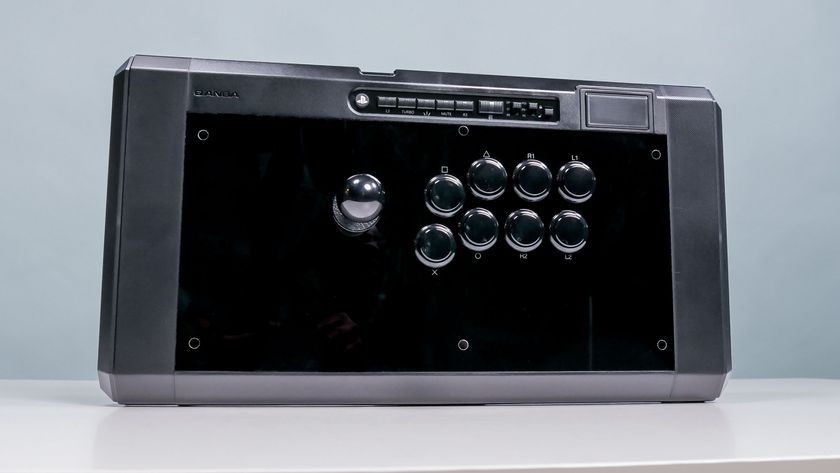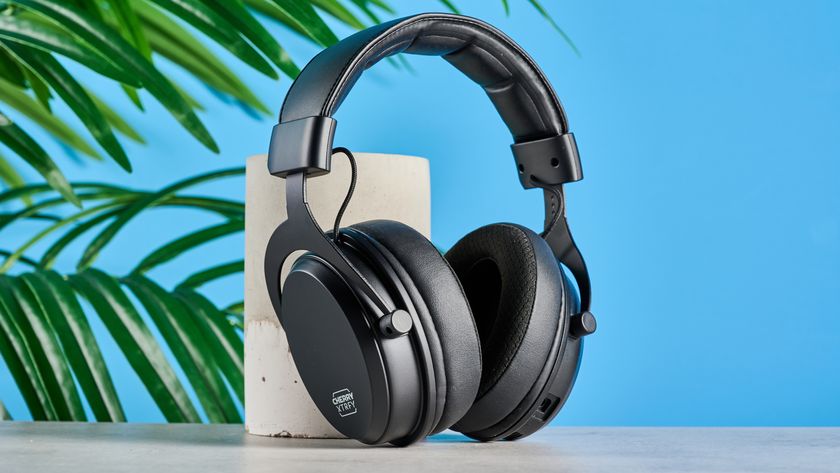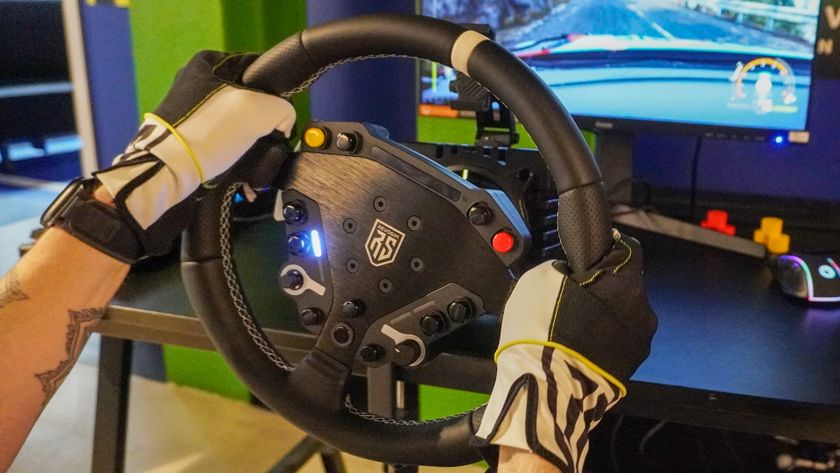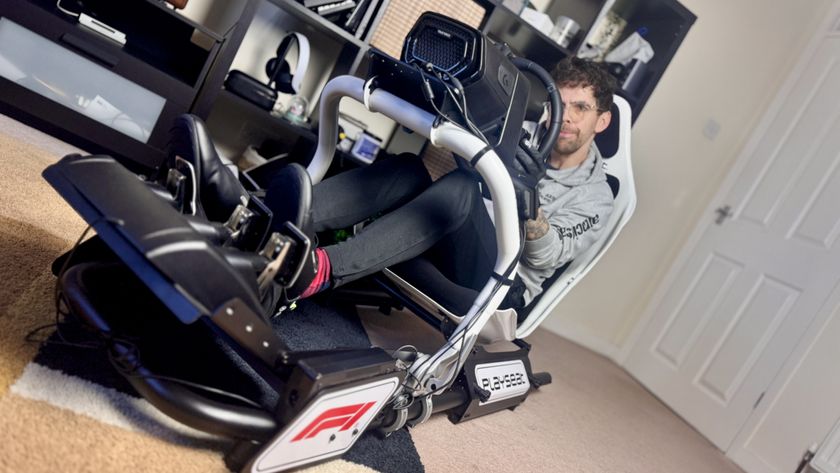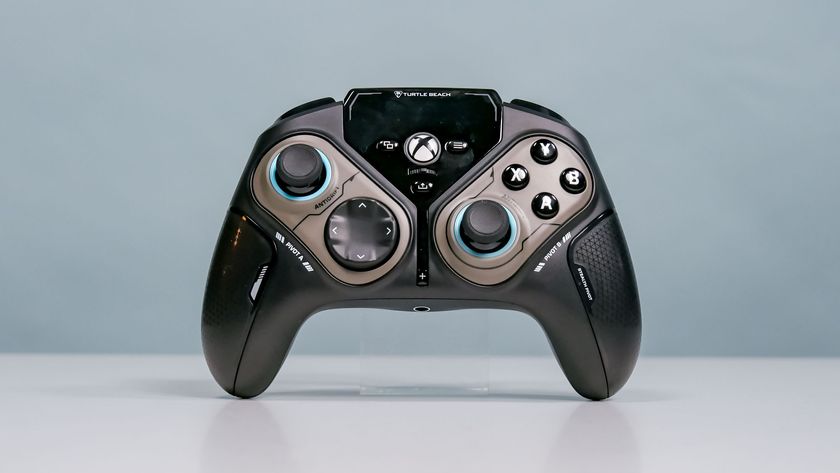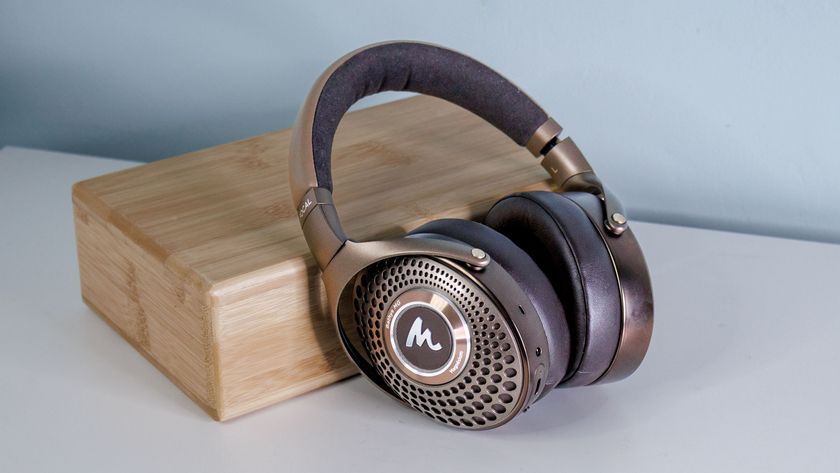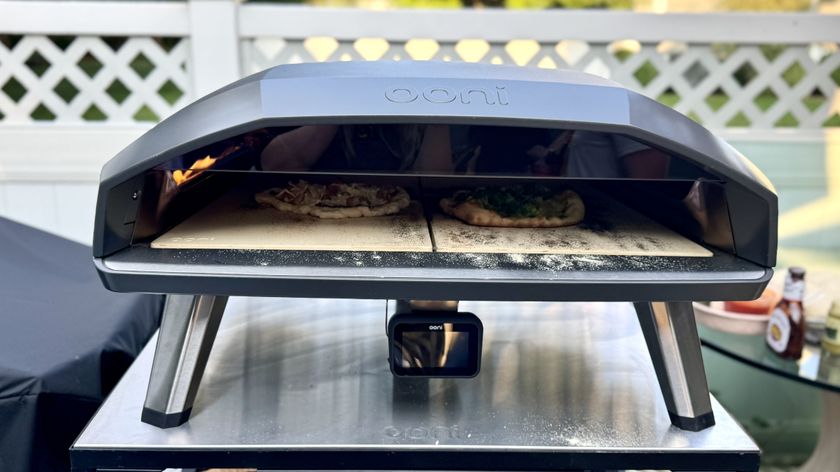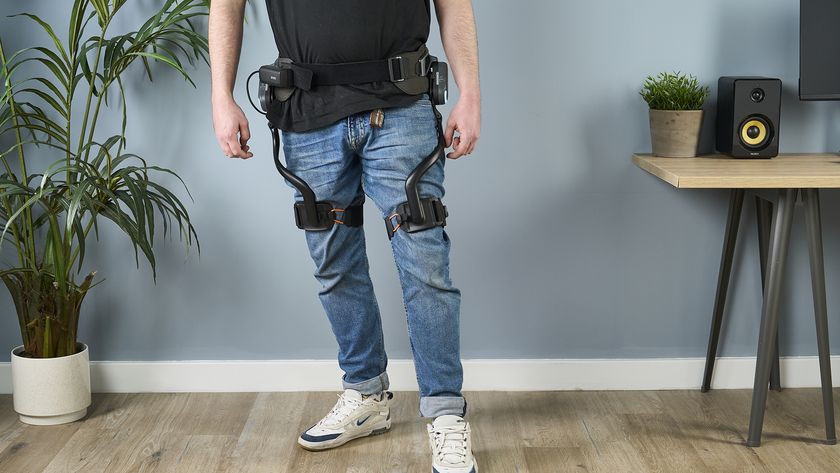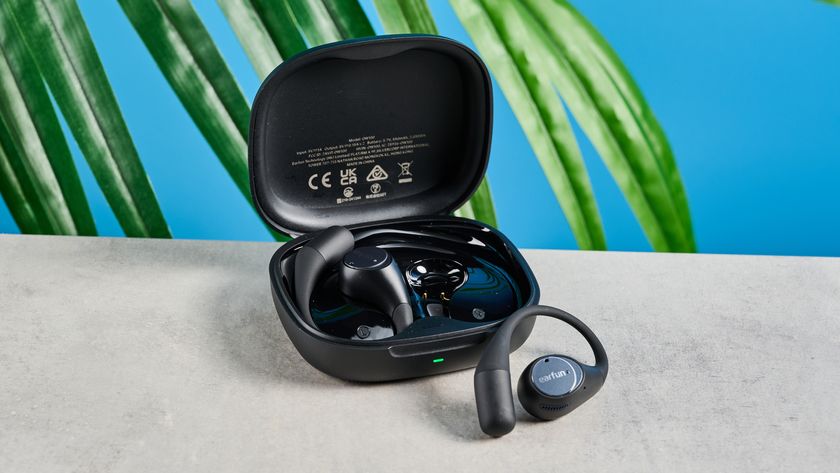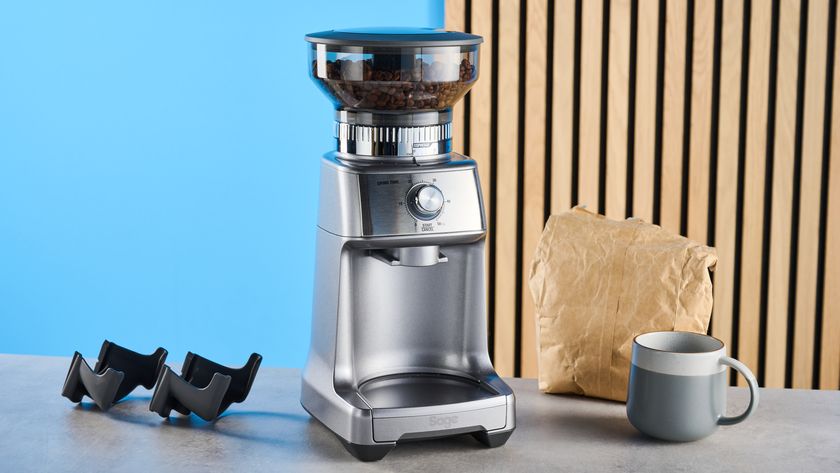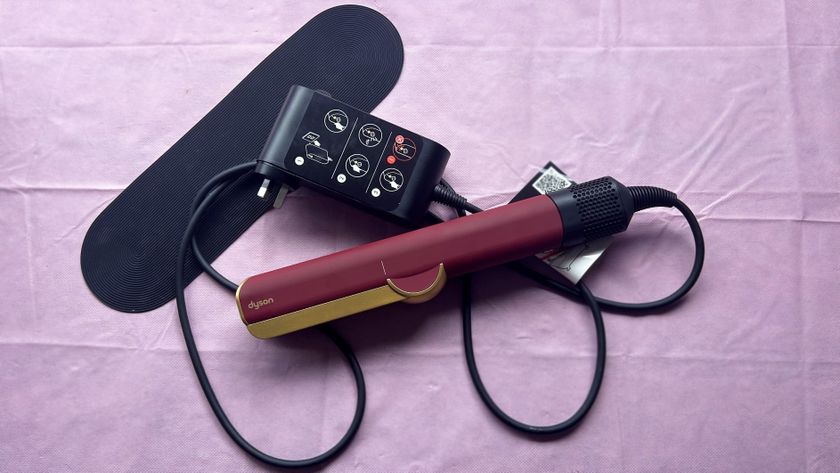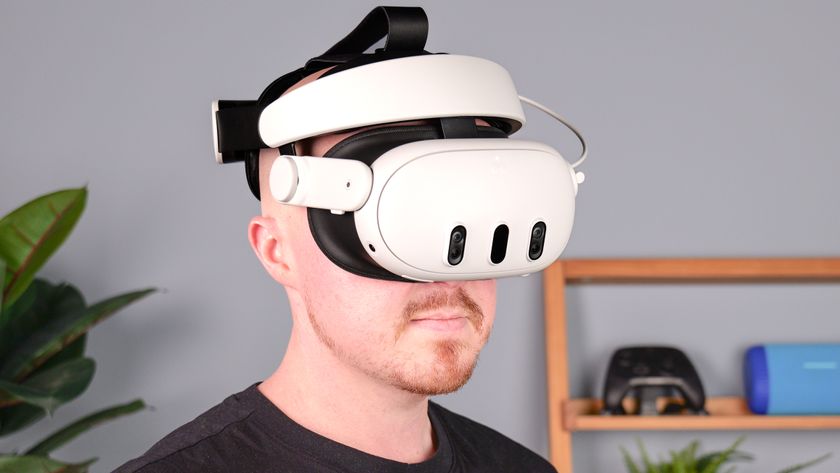Tom's Guide Verdict
The Razer Turret isn't a perfect solution for living-room PC gaming, but its great wireless performance and easy lap placement make it a viable one.
Pros
- +
Great wireless options
- +
Strong overall gaming performance
- +
Makes living room setups viable
Cons
- -
Uncomfortable over long periods of time
- -
Tiny, righty-only mousepad
- -
Keyboard not ideal for typing
Why you can trust Tom's Guide
Between sleek PCs, Steam Links and high-resolution TVs, it's easier than ever to bring your gaming rig into the living room. The only trouble is, once it's there, how can you control it? Wireless controllers and mice will take you part of the way, but good luck finding a decent keyboard or a hard surface level with your lap. The Razer Turret ($160) aims to alleviate living-room-related woes by providing a small wireless keyboard-and-mouse combo that runs flawlessly via either Bluetooth or USB dongle.
These peripherals are not as comfortable as they could be, nor as big as they need to be, but they do work exactly as advertised. While the Turret isn't a perfect solution for living-room PC gaming, it's a very viable one.
Design
You might be wondering whether the "Turret" refers to the mouse or the keyboard, but much like a Zen riddle, that would suggest a false dichotomy between the halves. The Turret comprises both accessories, and they're both attractive enough, if a little uncreative.

The mouse half of the Turret bears a lot of resemblance to Razer's thoroughly decent Orochi peripheral. While it lacks the Orochi's textured grips and colorful lighting, it’s a similar small size (3.9 x 2.7 x 1.4 inches) and features two programmable thumb buttons on each side. Oddly, the mouse itself is fully ambidextrous, even though there's no clear way to use the Turret as a lefty.
At first glance, the Turret's keyboard is a bit small, but that's because there's more to it than meets the eye. Unfold the keyboard to its full 20.8 x 4.8-inch length, and you'll discover that there's a small mousepad right next to the keys. This is what allows the Turret to be a complete living-room PC solution without taking up very much space or requiring a hard surface. All you need to make use of the Turret is your lap.
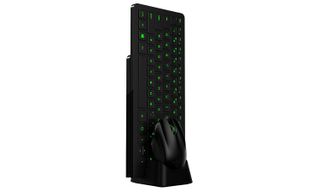
Aside from the built-in mousepad, the keyboard is unremarkable. Like the mouse, it doesn't light up, nor does it include a numpad. Some keys, like Esc and the Up and Down arrows, are extremely thin, and the whole setup reminded me of nothing so much as one of those drugstore handheld piano toys. It resembles the real thing, even performs like it, to some extent, but it's perhaps better suited to simple melodies than Mozart.
One major problem with the Turret is that despite the ambidextrous mouse, there is no way to use it with a left-handed setup. The mousepad folds out in only one direction, and it's not detachable. Making a mousepad that could affix to either side of the Turret doesn't seem like an engineering impossibility, and given Razer’s usual commitment to making products for both righties and lefties, its absence here is palpable.
MORE: Best Gaming Accessories
Keys
The Turret's keyboard can't compete with a full-size mechanical model, but it works well enough on its own merits. The device is a small, chiclet-style peripheral with shallow key travel and almost no gaps between the various keys.

Typing on it takes a little getting used to, but I didn't find it nearly as uncomfortable as I had feared. Using TypingTest.com, I scored 104 words per minute with 10 errors on the Turret, compared to 118 words per minute with five errors on my regular Logitech G810. I frequently hit adjacent letters and missed some capitalizations.
The Turret keyboard does sport one significant problem — used as intended, it's totally unbalanced. Touch typists like myself (and, presumably, most core gamers) need our hands dead center on the keyboard at all times, which means the keyboard has to be likewise at the dead center of our setups.
The mousepad is not big — if you make broad, sweeping motions with your arms, you're going to find your mouse on the floor sooner rather than later.
Once the mousepad on the Turret is extended, though, I had to balance it farther to the right on my lap. This meant that my arms had to list to the left in order to keep them where they needed to go. It was extremely uncomfortable, and my arm started feeling stiff after about half an hour. I can only imagine how an hours-long gaming session would go under those conditions.
Features
The Razer Turret runs on the Razer Synapse 2.0 software, which, as always, presents a simple way to customize the company's peripherals.
You can program the thumb buttons on the mouse, as well as adjust the dots-per-inch (DPI) sensitivity between 200 and 3,500 — that's not a huge range, but more than enough for all but the most enormous 4K displays. Each key on the keyboard is also programmable, which is helpful, given the reduced number of keys. You could program macros to each of the function keys, for example, then link each profile with a different game.

The biggest thing that sets the Turret apart from its gaming peripheral brethren is its extensive suite of wireless options. While there are a number of wireless gaming mice on the market, gaming companies have been reluctant to make wireless gaming keyboards, and consumers have been reluctant to buy them. Reservations about the keyboard itself aside, the wireless works quite well for both peripherals, complete with reliable signal and long battery life.
If you have a fancy new computer equipped with Bluetooth, you can simply flip a switch on the side of the keyboard or the bottom of the mouse to connect it that way. Otherwise, you can use the included 2.4-GHz dongle to pair both devices to an older computer. The signal, in my experience, was flawless either way. Battery life is also generous on both devices: up to 40 hours on the mouse, and up to four months on the keyboard. I used the Turret on and off for about a week, and didn't need to recharge either device during that time. Both devices recharge via an included dock, but you can't use them while charging, which is a bit of a pain.
The mouse and keyboard were both responsive, whether I was guiding Nova through enemy-infested futuristic prisons, or helping Lara Croft shoot down murderous mercenaries with a bow and arrow.
I do have one nitpick. While the mouse will turn on again automatically after a period of inactivity as soon as you use it, the keyboard requires that you to press the power button. It's not a big deal by any stretch, but I often started typing in a web address or username, only to find that my keyboard was fast asleep.
MORE: The Best Gaming Laptops
Performance
While I probably wouldn't want to use the Turret for long periods of time or in high-stakes competitive situations, I was pleased with the way it handled overall. I ran it through a variety of games to see how it performed across genres, and it held its own during Star Wars: Battlefront, StarCraft II: Nova Covert Ops, Heroes of the Storm and Rise of the Tomb Raider.
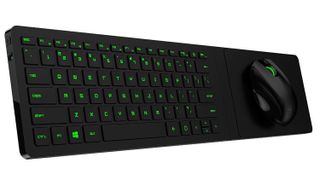
The first thing I noticed, regardless of genre, was that my hand often drew the mouse up close to (but never quite over) the edge of the mousepad. It’s simply not a very big surface, and if you make broad, sweeping motions with your arms, you're going to find your mouse on the floor sooner rather than later.
Once I got used to the limited space, however, it wasn't bad. The mouse and keyboard were both responsive, whether I was guiding Nova through enemy-infested futuristic prisons, or helping Lara Croft shoot down murderous mercenaries with a bow and arrow. My shoulder did feel a little tight after a while due to the odd position in which I had to hold the keyboard, but not so much that it affected my gameplay.
The Turret sets out to fill a very specific niche in the gaming world, and it's a big step in the right direction.
While the Turret was responsive, I still wouldn't quite trust it with something like StarCraft II or Heroes of the Storm in a high-stakes situation. I played both games pretty well, but my mouse hovered perilously close to the edge of the mousepad at some points, and dropping it or furiously swiping it in midair both sound like surefire ways to lose a tournament.
Bottom Line
The Turret sets out to fill a very specific niche in the gaming world, and although it's not a perfect fit, it's a big step in the right direction. The Turret isn't as big or as comfortable as I would have liked, but it's also attractive, functional and in possession of strong wireless features. If your gaming PC is in the living room, you could very easily complement it with a Razer Turret rather than a traditional wireless gaming mouse and some kind of productivity keyboard.
While it's hard to pinpoint a product that works better than the Turret, it's not at all difficult to imagine one: One that's a bit bigger, with a more responsive keyboard and a design that lets users' hands rest comfortably at the center of the setup. That doesn't sound impossible, but until it happens, the Razer Turret is probably your best bet for the living room.
Marshall Honorof is a senior editor for Tom's Guide, overseeing the site's coverage of gaming hardware and software. He comes from a science writing background, having studied paleomammalogy, biological anthropology, and the history of science and technology. After hours, you can find him practicing taekwondo or doing deep dives on classic sci-fi.

